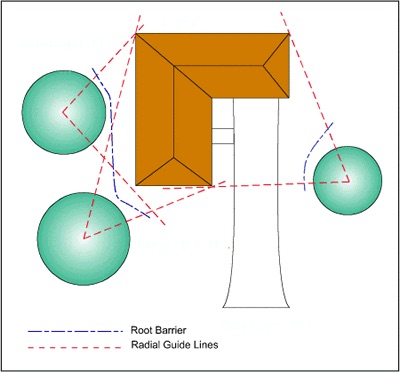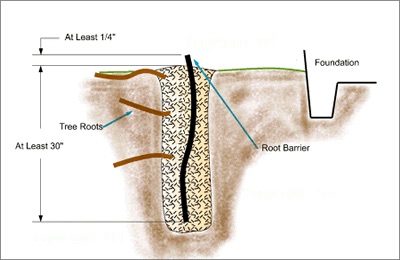Spring is upon us in North Texas even if the calendar says we still have more winter. The trees are budding and flowering and the weather has turned even wetter with storms promised tonight as I write. It is a great time to think about preparing your house and lawn for the rest of the year. Several different things come to mind, so many things I might need several days to cover everything on my mind.
For now I’ll mention the trees around your house. Trees are great! I love them! BUT not too close to your house! almost every house I inspect have trees planted too near to the house. A tree should never be planted so near the house that it touches the walls or roof and most importantly the foundation. If you are planting a new tree, it is easy to determine since the information included with the tree will include the mature size to aide in proper placement. If you have your heart set on a particular tree, measure the space you have available before purchasing since crowding big trees into a small space will make for a lot of unhappiness for you, the tree, and your house. If you have a diameter of 30′ listed for the mature tree size, you need a space at least 15′ away from the house, power lines, and other trees. A good alternative if you have limited space is some of the miniature versions developed for urban lots.
For established trees, the same guidelines apply, give them room! Diligent pruning can keep the branches away from the roof but don’t forget the roots. Large roots will typically extend at least as far as the upper limb canopy and can be disastrous to your foundation. The roots usually don’t damage the foundation directly but can upset the drainage and rob moisture from the soil supporting your foundation. In mid summer a healthy tree can pull so much moisture from the soil that the foundation can move significantly as the soil shrinks. One possible solution is root barriers and root pruning. This involves trenching and cutting the tree roots between the foundation and the tree, so great care and patience is needed for the sake of the tree. An arborist can advise on the best course of action for the tree but they may care more about the tree than your house!
Below are some graphics showing root barrier subterranean cross section and an overhead view of a typical house and root barrier placement. An impervious material, such as pond liner or sheet aluminum is installed vertically in the trench to discourage regrowth of tree roots.

